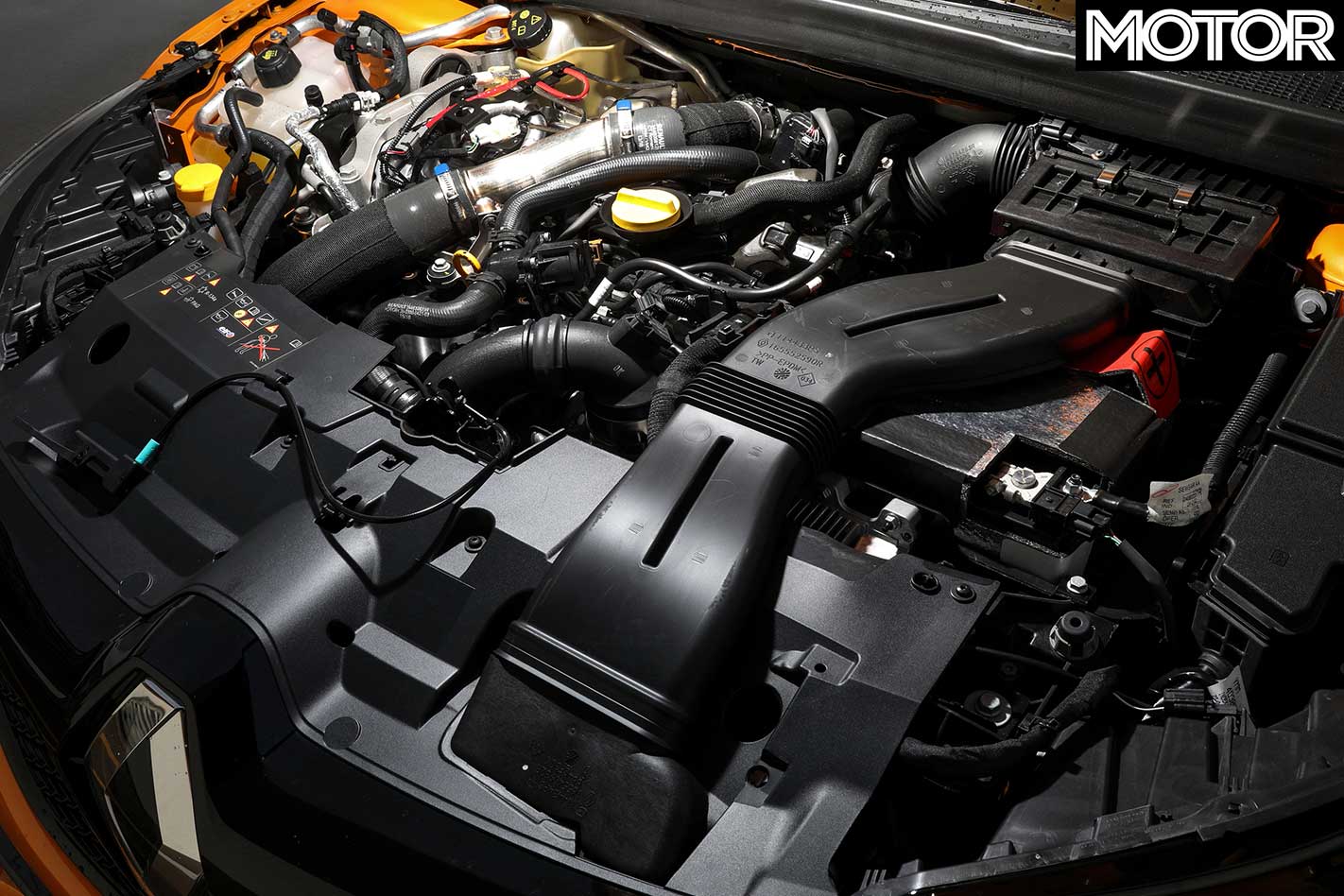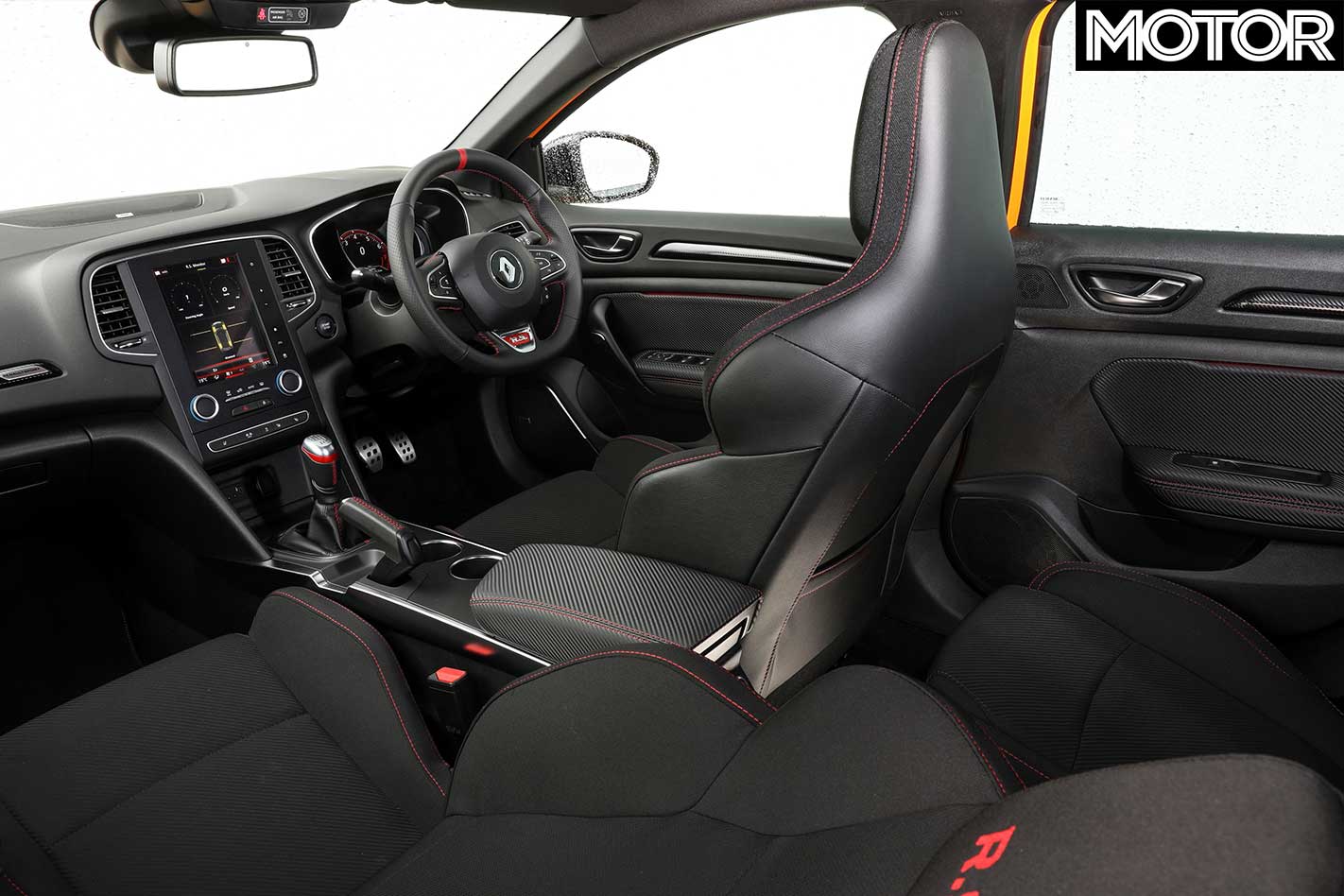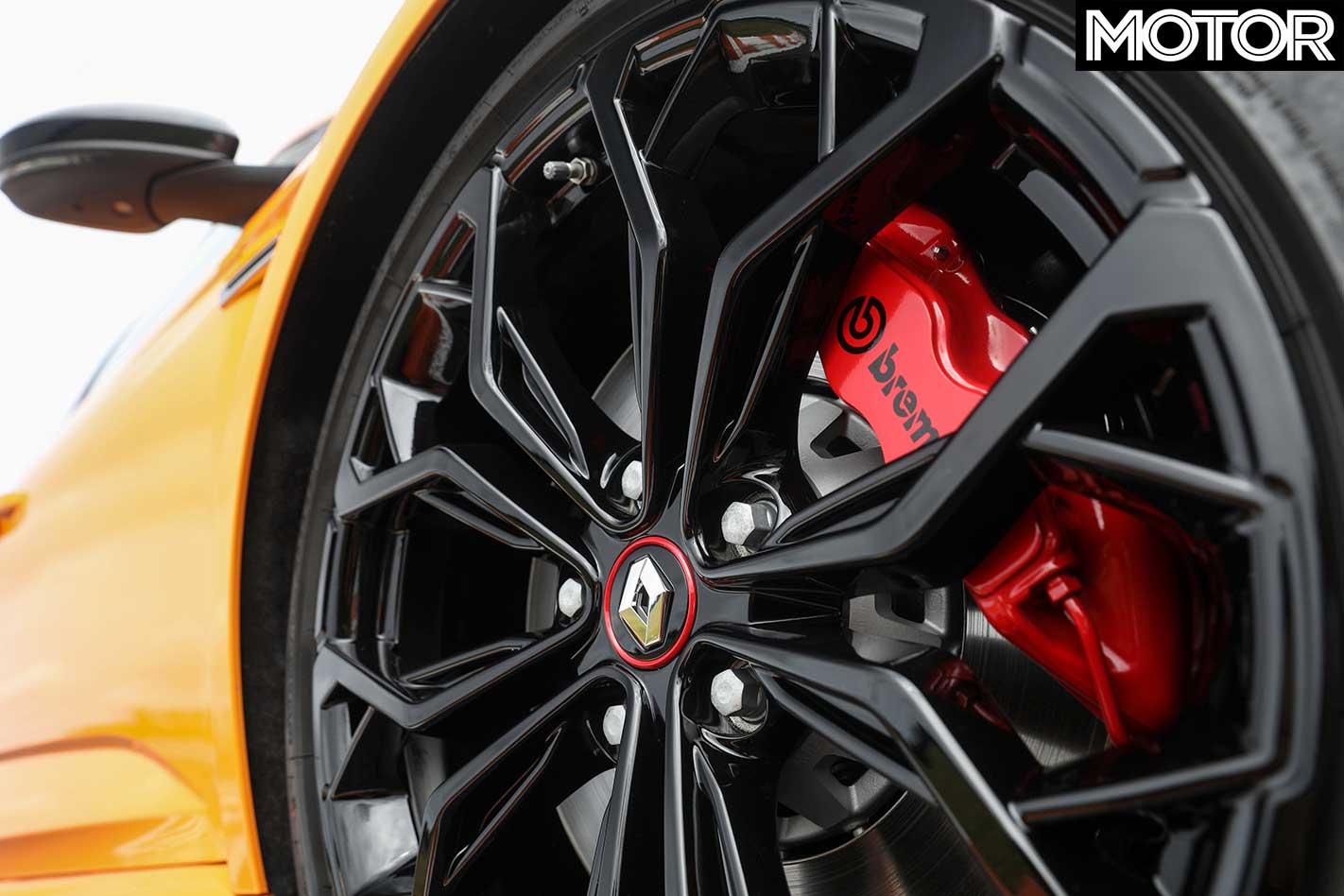FOR A company associated with the calculated world of Formula One, Renault Sport enjoys often throwing sense into the wind.
Take the Clio. For a while, in the early noughties, it built one with a mid-mounted V6. Then there was its Spider, a roadster with no windscreen, so you not only felt the wind in your hair but the local wildlife too.
More recently there was the Megane R26.R, a hatch with a roll cage and plastic windows. So you can understand our curiosity surrounding its 2018 Megane RS 280.

The most noticeable step in this direction is its body style. Gone is the seductive three-door hatch of the second-generation Megane RS. This new car, built from the fourth generation regular Megane, uses the base car’s five-door body shell.
On the Nissan-Renault alliance’s CMF-platform, the Megane RS280’s new body is 40mm longer and extends its wheelbase by 23mm to 2669mm. It also uses Renault Sport’s recognisable tricks, like wheel guards are stretched by 63mm up front and 45mm at the rear to house significantly wider tracks.

Renault says the new surfaces produce actual downforce. And you’ll find those modifications inspiring hidden in its stylish bodywork. The ‘F1-style’ blade in its front bumper is followed by vents behind the front wheel guards that extract air from inside them. That rear diffuser, too, is functional and reaches far underneath its nose.
Norwell Motorplex, in Queensland, sees only the start of fourth gear at its fastest point – which is the corner exit after a fast sweeping right-hander – so the aero doesn’t count for much here.

But the Megane will reach those speeds quickly enough for a sub-$50K front-drive hatch, striding forward with a turbocharged 1.8-litre four that now puts out 205kW and 390Nm since being pinched from an Alpine A110.
As well as the new downsized engine, another first is a dual-clutch transmission, branded by Renault as ‘EDC’ to mean Efficient Dual Clutch. We’ll touch on it later on, as there’s quite a bit to learn about this new engine.
The new block has cut both bore and stroke measurements, remains undersquare, and adopts a higher 9.2:1 compression ratio with direct injection fuelling. Although the succeeded Megane pushed out almost as much power in its highest tune for the RS275 Trophy R, it couldn’t have matched this unit’s torque or flexibility.

The new twin-scroll turbocharger builds peak twist at 2400rpm on the spec sheet, holds that until 4800rpm, and delivers peak power at 6000rpm. Sink the throttle and it’ll start pulling at 3000rpm as thrust builds progressively into a strong mid-range, rather than hit like a sledgehammer in the old car.
The engine’s air box now breathes through an extra opening, and the cylinder block’s bores are plasma coated – like they are in a Mercedes-AMG A45. Keep your foot in the throttle and the engine will spin to 7000rpm, thanks to some trick cylinder head work, however, you can sense the show’s over about 500rpm earlier than that.
Renault offers the Megane RS 280 with a six-speed manual transmission or six-speed dual clutch to shift with, but in Australia, at least for a while, each choice of gearbox carries its own set of compromises. Let’s start with sound.

Renault’s again designed the car’s front suspension around dual-axis hubs that allow the steering and suspension to operate free of each other. With the $1490 Cup chassis, however, the car’s open differential is upgraded to a Torsen LSD. On top of that, stiffer springs, dampers, and anti-roll bars feature at each corner, and its hydraulic bump stops are re-tuned.
These bump stops are said to use ‘dampers within a damper’, and they’re the Megane RS’s latest dynamic weapons. They’re equipped on both chassis options, as are a set of 19-inch wheels and a Brembo braking system. The Cup gets ‘bi-material’ 355mm discs – marked by red calipers hiding behind an exclusive black wheel design. Europe gets 18-inch wheels as standard with Continental SportContact 6 tyres, but all 19-inch wheels come wrapped in Bridgestone S001s measuring 245mm wide.

The fact Renault restricted the Sports chassis’s drive program to the road, and the Cup chassis’s to track, might suggest why each are locked to one transmission. From a brief stint on roads we sense the Sport chassis has the same levels of grip as the Cup, but loses its agility and turn in. Instead, it has a calmer ride and breathes with undulations better, gifting the deformable torsion beam arrangement surprising compliance.
It’s no surprise the Cup chassis’ ride feels perfectly judged on track, rolling about enough so you can feel the weight transfer, yet not so much as to upset the car’s control on its grip balance. However, we suspect that on road it might hold itself in place too tightly, and struggle to settle over ruffled surfaces.
The new Megane’s steering system is accurate, but it also feels slightly elastic in assistance and weight. The old rack felt lighter and more tactile under load. But let’s not forget you’re not the only one steering this car, as Renault Sport have retained the Megane GT’s rear-wheel steering for the RS.

With a fresh Renault Sport tune, the system steers in the opposite direction to the front boots up until 60km/h. Switch to Race mode and this threshold raises to 100km/h. It also turns off ESC, but the Megane’s Cup setup is so friendly and approachable at its lofty limits the rear-steering helps to rotate the car without robbing stability.
The system itself might feel strange to drivers who prefer slow and progressive inputs. You have to wind off lock when it pushes the car’s nose into a corner too quickly. Like other systems, the rear wheels steer in the same direction to aid stability above the speed thresholds, though overall it’s worth the small drawback in steering purity.
Swapping between drive modes is done through a vertical 8.7-inch touchscreen inside. Or you can use a button. Flick from Neutral into Sport and the digital dash in front of you also glows red. Race creates two rev bars that close a gap as you near each upshift. The interior’s fairly nice, with only a few ergonomic quirks, and oozes refinement with well-bolstered bucket seats.

Alcantara seat trim ($1190), metallic paint ($600-$880), sunroof ($1990), and a Bose sound system ($500) are the few options available beyond the transmission and suspension tunes. We didn’t get to listen to the car’s standard eight-speaker sound, but the optional Bose system blasts a crisp note, even if it lacks a little depth.
With all these features, Renault’s done well to price the new Megane RS 280 at $44,990. That base price splits the Hyundai i30 N and Honda Civic Type R and slightly undercuts the Peugeot 308 GTi. You can add the $2500 six-speed dual clutch to take on a new LSD-equipped MY19 VW Golf GTI, but it’s the Cup chassis for $1490 that gives the Megane RS its crucial edge.
That doesn’t matter, it seems, as Renault expects to sell around 600 units over the first full year on sale, surpassing the previous generation’s best result of 545 units sold in one year. It expects two-thirds of that will be automatics. And while the decision to take on five doors is looking like a winning move for that game, we can’t help but think Renault Sport has missed an opportunity here.

It can fight more hot hatches than ever before, but we suspect a full road test, in either guise, will see each chassis setup missing a little of the other’s core essence.
The low-speed ride quality of the Sport chassis and the adjustability of the Cup chassis proves Renault Sport can do both.
But ti’s given outright dominance with one car for specialised skills played by a few. Has it been left to the RS300 Trophy variant to infuse these qualities together in 2019? Perhaps.
For now, here at Norwell, the Megane RS 280 Cup is at least a very promising contender. Bring on the competition.
2018 RENAULT MÉGANE RS 280 CUP SPECS: Engine: 1798cc inline-4, DOHC, 16v, turbo Power: 205kW @ 6000rpm Torque: 390Nm @ 2400-4800rpm 0-100km/h: 5.8sec (claimed) Weight: 1430kg Price: $44,990 (manual); $47,490 (dual-clutch)
Rating: 4 out of 5 stars






